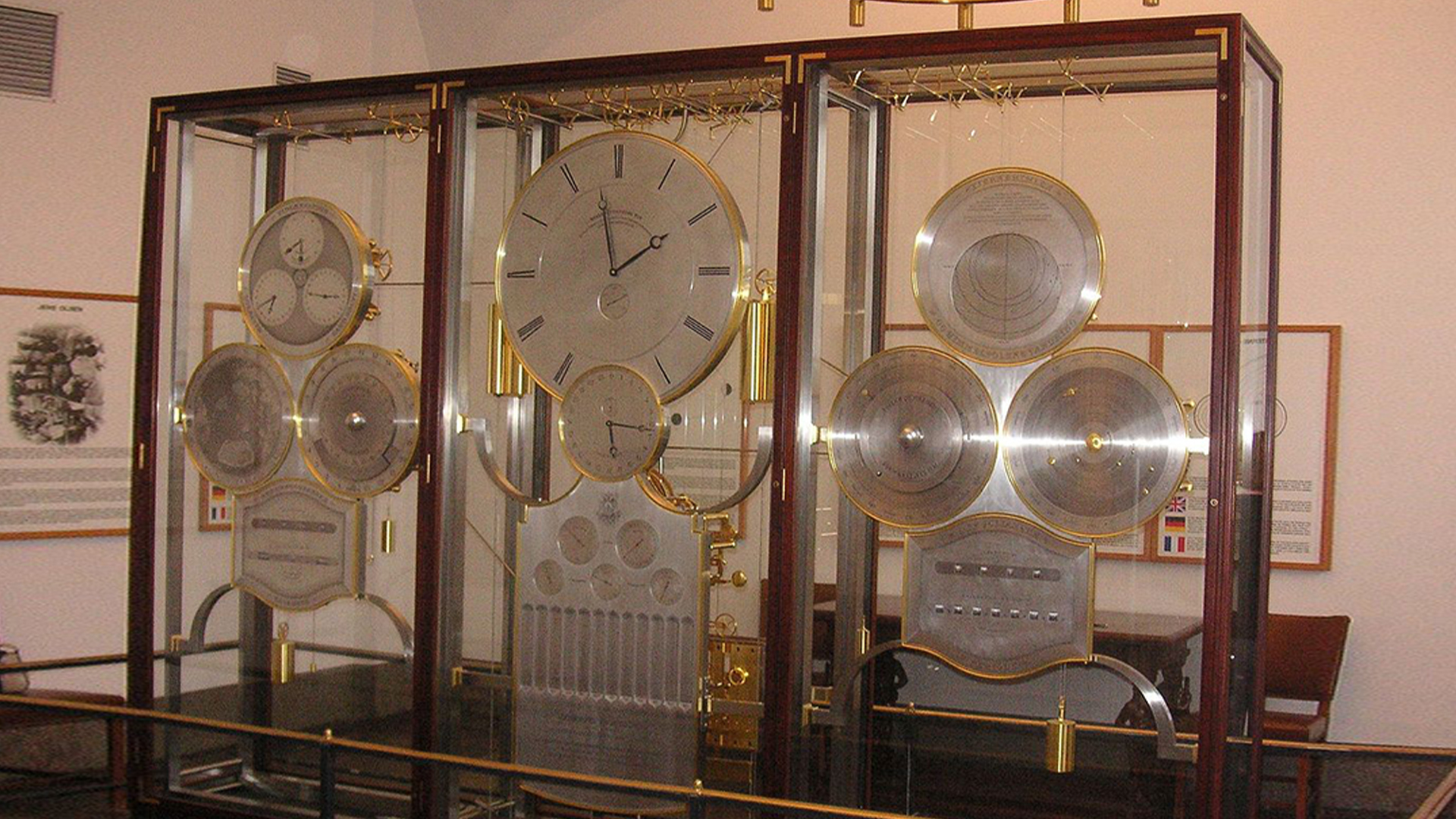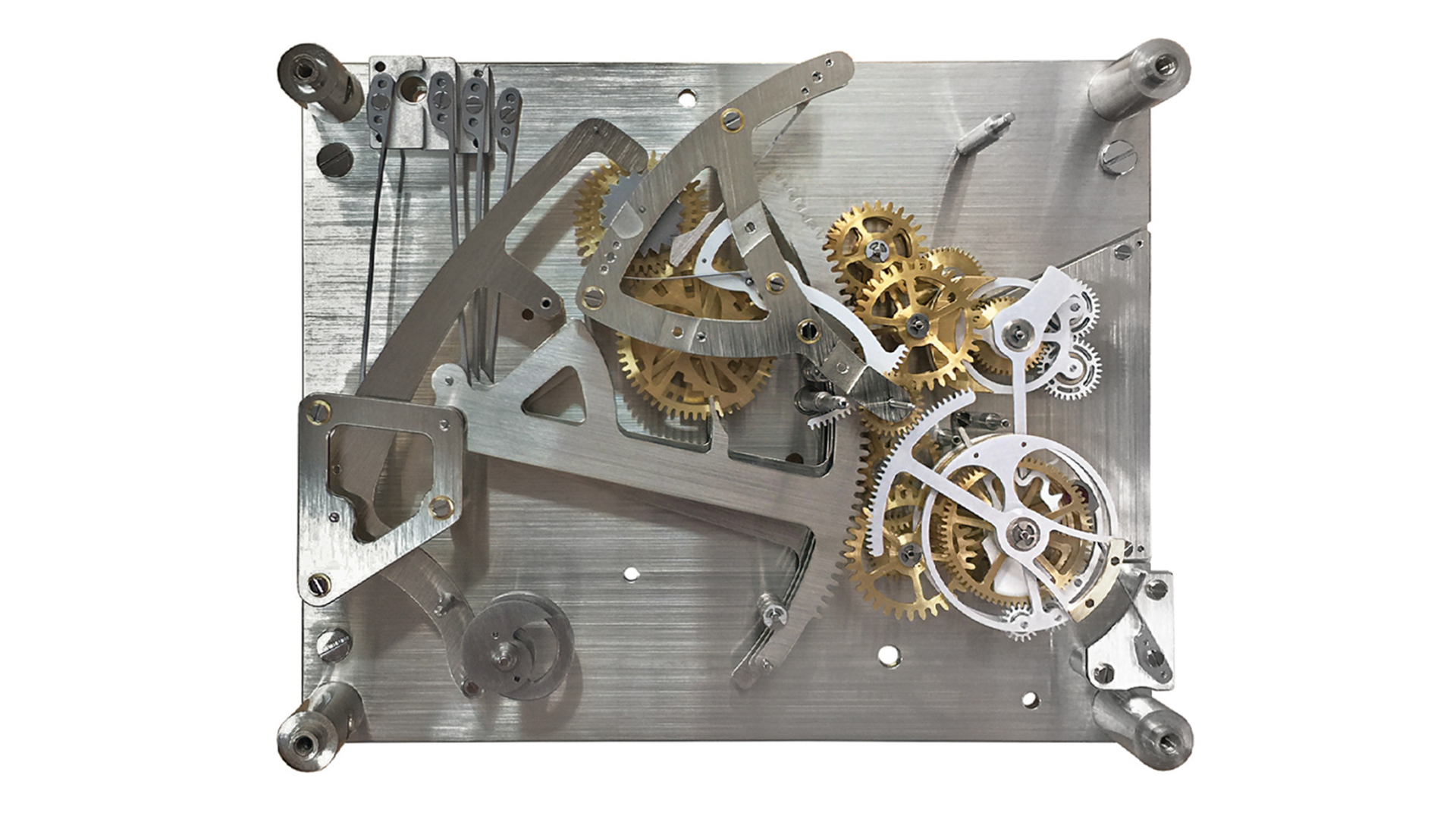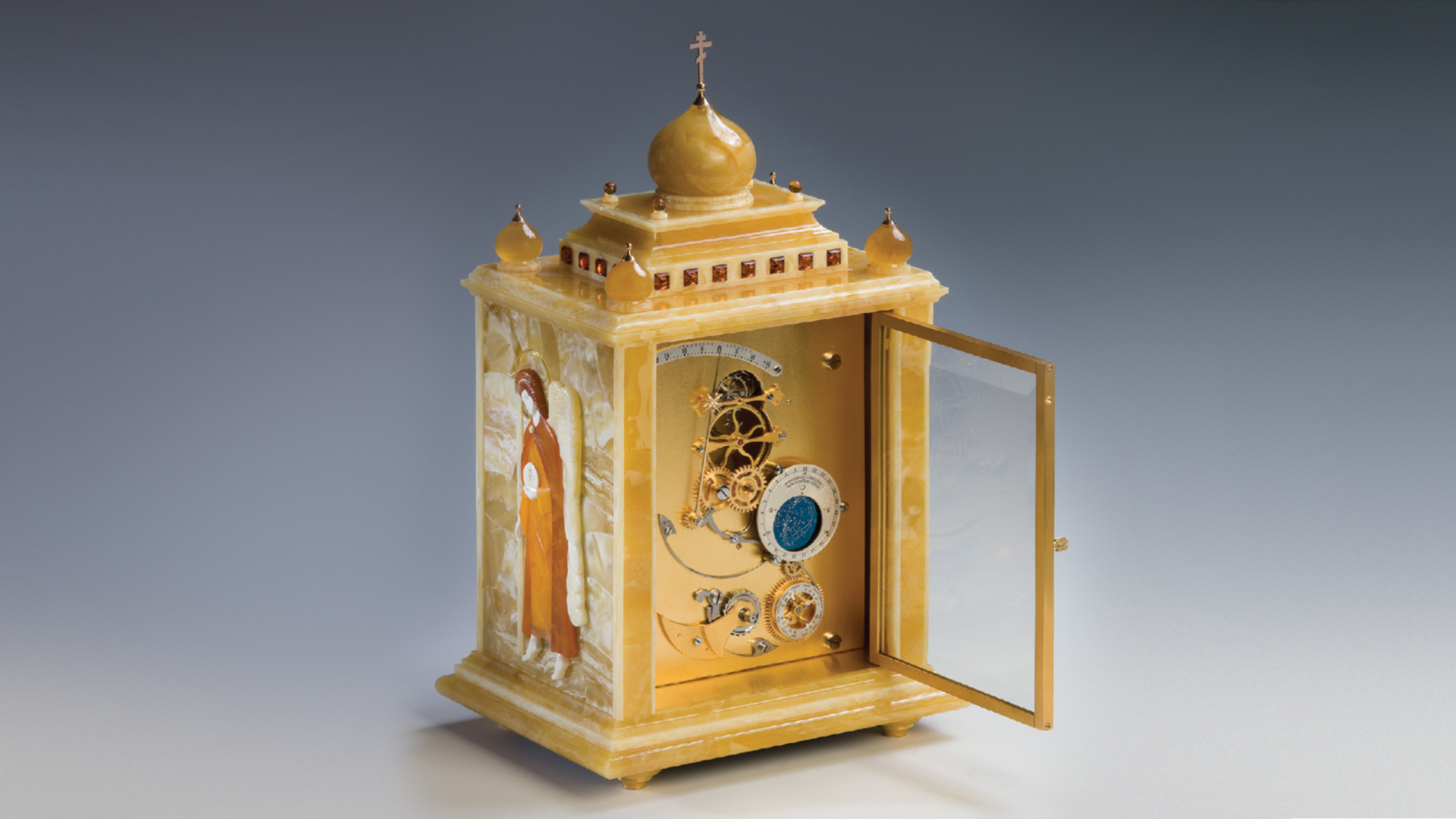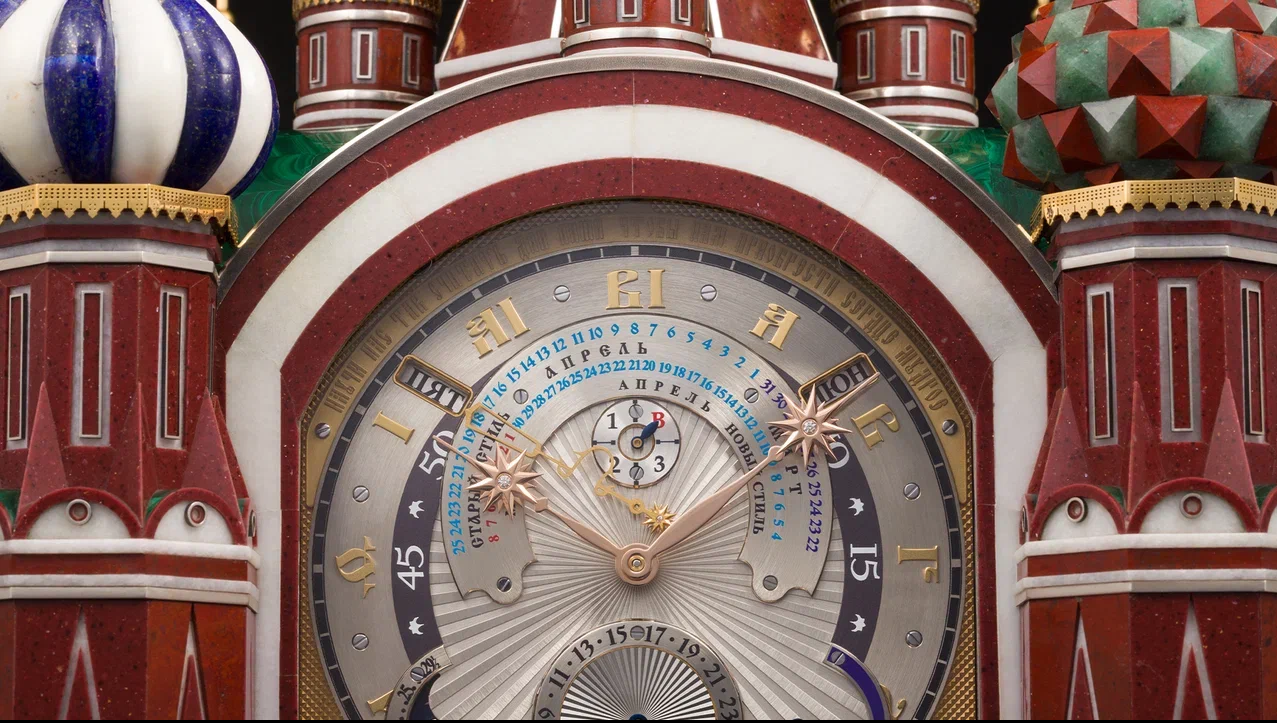As Easter approaches, WatchPro gets an in-depth take from Konstantin Chaykin on the Computus clock.
He explains how the topic is intriguing and deeply rooted in the history of watchmaking – “so deeply that you can hardly imagine it (but more on that later).”
Here’s what the watchmaker had to say:
First, about the terms. Computus clock is a timepiece with an indicator of the date of the upcoming Easter.
Of course, we initially assume that the clock is mechanical, since electronics in this context is of no interest. There are computus clocks that operate according to the Gregorian calendar, and there are computus clocks that are programmed to function according to the Julian calendar.
There are timepieces in which Easter dates, previously calculated for a certain period of years, are programmed in an eccentric disk – such computus timepieces are called tabular (someone smart made a table, and the watchmaker reproduced it in his watch or clock).
This method of making a computus timepiece is not very attractive, since it is not difficult to conceive and implement…by the way, this is exactly how the Easter date indicator of the famous super-complication pocket watch Calibre 89 of the Genevan brand Patek Philippe is calculated for a 28-year period.
A different, much earlier method was used in complicated astronomical clock Astrarium by the Italian master Giovanni de Dondi, who supposedly worked on them from 1348 to 1364.
Apparently, he was the first clockmaker to use the computus function in a mechanical timepiece. The clock has not been preserved, but a treatise with a detailed description of it remained – it was written by the master.
The Astrarium clock’s computus module consisted of a gear and three chain indicators – of a 19-year Metonic cycle, a 15-year cycle of indicts and a 28-year solar cycle.
The mechanism switched every indicator for one link forward each year. To determine the date of Easter, it was necessary to find it in a special table according to the three numbers depicted on these indicators. This is far from what we expect from a comfortable clock, isn’t it?
The first question that bothered me – is it possible to conceive and produce a fully automatic mechanical computus timepiece that calculates and shows the date of Easter by itself?
Yes, it is. There are rules for calculating the date of Easter, they are based on astronomical and calendar cycles, presented in natural numbers, and therefore can be reproduced in a mechanical device.
The second question, which is not very difficult to answer – is anyone making such a clock? The answer is simple – yes, the Internet and Wikipedia provide, if not exhaustive, then at least a very extensive set of information on this topic.
The only problem I encountered is that it is incredibly difficult to understand from the available descriptions and images how exactly the computus is implemented in the clock, what are the principles of its operation, and what are the limitations of the computus function of a particular timepiece.
Here very often there is a fear that there is confusion, misunderstanding and simply errors in descriptions and interpretations.
According to my feeling, there is often a lack of awareness in this topic of authors writing about it (with all my sincere respect and understanding of the importance of their work).
My modest research attempts show that there are very few craftsmen who have taken the trouble to do something in the difficult mechanical art of indicating the date of the upcoming Easter. So little that it’s even funny.

Another reason for irony is that the information available in the public domain often does not make it possible to finally decide whether this or that clockmaker really went through all the torments of hell in order to design and implement a purely mechanical device that predicts the date of Easter.
The topic is so far from the life of a modern person who, in order to study it, must plunge into the wilds of the historical realities of the early centuries of civilization, into aspects of the history of the Christian religion, into astronomical data and their relationship with calendar systems.
To put it simply, I can hardly imagine a ‘simple’ person who will take up this work and invest his time, energy, and, ultimately, part of his life in it.
In words, everything sounds simple: the date of Easter is the first Sunday following the first full moon, which comes after the spring equinox. However, the implementation of this rule in the clockwork mechanism is an extremely difficult undertaking.
Let’s start with a mechanism that should calculate the date of the upcoming Easter according to the Gregorian calendar. Such a development presents a very difficult challenge for the clockmaker, since the Gregorian computus algorithm gives the duration of the period when the dates of Easter begin (would begin) to repeat, 5’700’000 years, or 70’499’183 lunar months or 2’081’882’250 days.
This cycle should be multiplied by 35 days, which is a calendar span that combines all possible Easter dates. Stunning numbers that cause fear, but not everything is so scary in reality, since these numbers are the multiplication of shorter calendar and astronomical periods.
Nevertheless, these figures explain why until now (and it is unlikely that the situation will change in the near future) the clock with the Gregorian computus is realized only in the monumental clock’s format.
Size matters. In a truly large clock, it is not a problem to manufacture and install a wheel with several hundred teeth, which is already difficult to achieve, for example, in table clocks, and even much more so in pocket or wrist watches.

As far as I can tell, after analyzing all the information that I have been able to collect on this subject, there have been only three clockmakers in the entire history of horology (maybe four, but I cannot say that I am completely sure of this) who were able to make a working computus clock which calculates the date of the upcoming Easter according to the Gregorian calendar: this is Jean-Baptiste Schwilgué, a French horologist from Strasbourg, who was the first to design and manufacture a fully automatic device that displays the date of Easter; Danish watchmaker Jens Olsen and French watchmaker Daniel Vachey.
The computus module of Jean-Baptiste Schwilgué was installed by him in the third astronomical clock of the Strasbourg Cathedral, which is currently operating. Jens Olsen conceived the idea of installing a computus in his super-complication astronomical clock, now known as the World Clock (in Danish Verdensuret) or Jens Olsen’s Clock, work on this clock after the death of the master was completed by his colleague Otto Mortensen.
Finally, Daniel Vachey installed the computus in an ultra-complicated astronomical clock he made, which is now in the collection of the International Museum of Watchmaking (Musée international d’horlogerie) in La Chaux-de-Fonds.

The situation with determining the date of Easter according to the Julian calendar, which the Orthodox Church continues to adhere to today, is simpler – therefore, the corresponding clock should be called Orthodox computus clock.
The period in which the dates of Easter are repeated according to the Julian calendar is 532 years, or 6’580 lunar months, or 194’309 days. Also, we should not forget about the same 35 days, which is a calendar interval that combines all possible dates for Easter – this rule also applies to the Julian calendar.
These figures are also impressive, but they can be mastered, as proved by Konstantin Chaykin, watchmaker from Russia.
In general, it is clear why it was the watchmaker from Russia who undertook this work – after all, the Orthodox Church operates there. From the book written about this watchmaker, we can learn what he conceived and produced his first computus table clock in 2005, just two years after he started to create his first ‘Foundation’ tourbillon table clock, in the course of which he actually studied the trade.
The principle of operation of his computus clock was based on the coincidence of holes in two perforated program discs. In such a mechanism, the Easter cycles were mechanically multiplied, and the user only had to look at the matching holes (it looks like a black dot) and match them with the date scale. Very simple and elegant. From a mechanical point of view. But not truly comfortable in practice.
Therefore, the master had a desire to design a completely mechanical device that would show the date of the upcoming Orthodox Easter in the classical, most convenient way for us – a pointer hand on the dial scale intended for that.

Since Konstantin Chaykin wanted to remain in the dimensions of a compact table clock, the simplest idea of producing a program wheel with 532 teeth, each of which would be programmed with the dates of Easter, which corresponds to 35 levels, was rejected by him as unrealistic. This is true, based on the current state of horological technology.
This idea captured the master, and he managed to solve this problem. To begin with, he turned to the basics of calculating the date of Easter, namely the famous algorithm that was developed by the great German mathematician Karl-Friedrich Gauss. Gauss developed an algorithm for the Gregorian computus, but Chaykin took that part of it that is valid for the Orthodox computus.
An attempt to directly represent this algorithm in the form of a mechanical device turned out to be unrealizable due to its complexity – after all, Gauss created his algorithm for a mathematician, and not to be implemented in a timepiece. The representation of mathematical quantities and actions on them in the format of a clockwork has its own characteristics, which were hardly of interest to the German mathematical genius.
So Konstantin Chaykin took up the work that Gauss did not complete, but in fact, he, starting from the Gauss algorithm, developed his own algorithm. Unfortunately, no matter how hard I tried, I could not find references to the ‘Chaykin’s computus algorithm’ on the relevant resources – that is sad truth.
How was the Chaykin’s algorithm built? This is an extremely intriguing topic, since horologists rarely make significant contributions to other areas of knowledge, although this happens, and here is the same case. When trying to implement the Gaussian algorithm in a clock, the stage of calculating the displacement of the full moon date relative to the date of the vernal equinox inevitably arises.
It is easy to imagine that this displacement can be up to 29 days. If you try to calculate this offset in the clockwork, this value turns out to be very large and problematic. So Chaykin came up with a cunning move, which, as it always seems when realizing truly inventive things, seems extremely simple and almost obvious. Yes, it is, if someone has already done it (here, according to the custom of modern communication in social networks, it is necessary to put a smiley with a wide smile).
Chaykin presented this long interval as the sum of a number of complete weeks plus a few days of an incomplete week. So he represented a large number as the sum of two small numbers. That is, from zero to four full weeks and from zero to six days of an incomplete week – horologists have long been accustomed to working with these numbers, and they do it with brilliance. Think minute repeaters or perpetual calendars are compelling examples.

Analyzing the calendar, Chaykin noticed that the displacement of the date of Easter Sunday from the date of the first Sunday after the vernal equinox is an integer number of weeks (which, in general, is self-evident), which is either equal to the number of full weeks of the displacement of the full moon date relative to the date of the vernal equinox, or by one a week more (to notice this, you must already dive deep into the topic).
Finally, he realized that an extra week should be added in the case when (carefully, there will be complicated information later!) the number of days of an incomplete week of the displacement of the full moon date relative to the vernal equinox is greater than or equal to the number of days of the displacement of the date of the first Sunday after the vernal equinox from the date of the equinox (to understand this, one should have been born Chaykin). Bingo! He managed to break the computus algorithm into three program cams – with 28 steps of 7 levels, with 19 steps of 7 levels, and with 19 steps of 5 levels.
Of course, this calculation did not eliminate all the difficulties that Chaykin had to face in the implementation of clock with Orthodox computus.
In order to read the information from these three program eccentrics, it was necessary to provide the clock with three independently operating probe levers, the angle of their rotation had to be transferred with the necessary gear ratio to the summing and comparing differential gears, in order to finally obtain a rotation of a single hand pointer, which produces an indication of the date of Easter.

The design turned out to be extremely complex – in total, more than 300 parts are used to rotate just one hand. In the history of watchmaking, there are few indicators so complex. For comparison, a watch movement with one of the most complicated functions, the minute repeater, consists of about 200 parts.
The peculiarity of the automatically operating computus, including Konstantin Chaykin’s computus, is its link to another calendar device – the perpetual calendar. In Chaykin’s computus clocks, it is the perpetual calendar that, when switching the calendar to the new year, automatically starts computus module, which in a couple of minutes calculates the date of the Orthodox Easter of the coming year in order to show it with the hand intended for that.
This hand will remain motionless until next year, when everything will repeat itself.

Ressurection Computus Clock, Chaykin’s first table clock with a fully mechanical device for calculating and indicating the date of Orthodox Easter, was made by him in 2007. The clock operated well, however, the master, after assembling it, had a desire to further improve the super-complex mechanism.
In particular, he wanted to abandon the scheme with the computus module sourcing the energy from the spring, which was tensioned from the eccentric throughout the year. This scheme, according to the master, unnecessarily loaded the clockwork, and therefore for the Northern Computus Clock, his third clock with this rare feature, work on which was completed in 2015, the master developed a different way to supply the energy to the computus module.
If in the Ressurection Computus Clock the perpetual calendar used for the operation of the computus the energy from a spring tensioned throughout the year, then in the Northern Computus Clock the perpetual calendar made it possible to supply energy to the computus from the main barrel, using its other side, which is not used to drive the base movement of a clock.
In addition, Chaykin modernized the computus module itself, in particular, to reduce inertia, using a light aluminum alloy in the production of probe levers.

He also used a modernized version of the computus module in his fourth – and in the time being the last – computus clock, the Moscow Computus Clock, which was completed a year later. It is a stunningly complicated clock with 27 additional mechanisms and complex functions, the most complex mechanical clock ever made in Russia, and one of the most complex table clocks in the world – but that’s another story.
I would like to end this story mentioning that Konstantin Chaykin remains the only horologist in the world who invented and manufactured the first Orthodox computus clock in the history of horology, and made four working examples – one, the early, based on the positional principle, three – based on the mechanical computing module. By the way, as Chaykin notes, the term ‘computer’ itself comes from the word ‘computus’…

P.S. The craftsman, who created four computus clocks, did not stop in his desire to invent a new way to implement this rare function.
He designed a computus module that would use two program eccentrics. And, besides, he knows how to make a table clock with Gregorian computus, but the problem is that there was no collector in the whole world, a connoisseur of unique mechanical clocks, who would contribute to the realization of this project.


